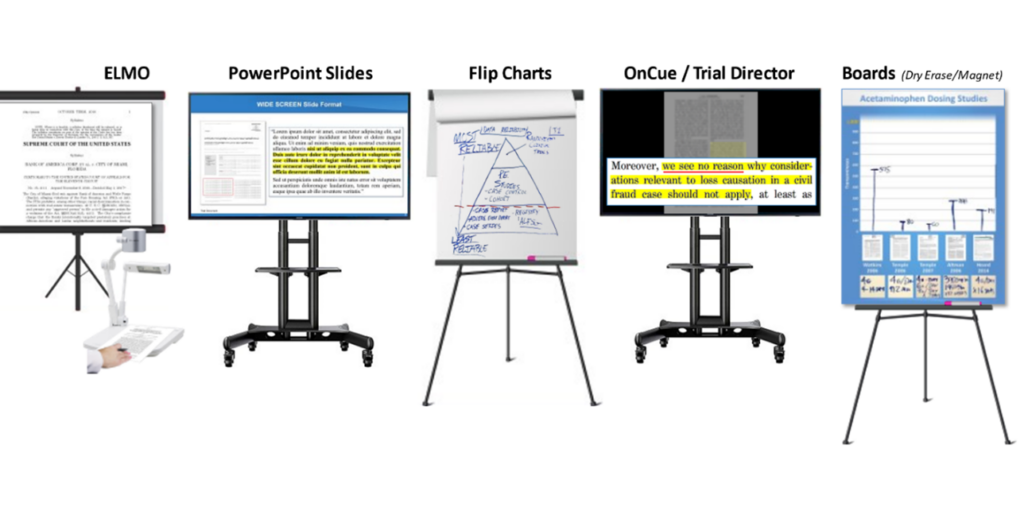Exactly How Test Presentations Enhance Your Disagreement and Convince Jurors
Trial presentations act as a crucial device for enhancing lawful debates and convincing jurors. By integrating aesthetic help, narrative structures, and psychological involvement, lawyers can produce a compelling instance that reverberates on several levels. The calculated use visuals not only clarifies complicated information but likewise records jurors' attention more successfully than words alone. The art of narration plays an equally critical role in changing valid evidence right into a compelling story, shaping jurors' assumptions. Comprehending these aspects can dramatically influence test outcomes, increasing the concern of exactly how each part adds to this intricate dynamic.

Relevance of Aesthetic Help
Aesthetic help play a critical function in enhancing the performance of test discussions, as they can dramatically increase target market involvement and retention of information. In the context of a trial, where jurors are tasked with handling complicated details, visual aids offer to simplify and clarify key factors. Graphes, graphs, and pictures can share information and principles that may otherwise overwhelm or perplex jurors, enabling a much more straightforward understanding of the evidence offered.
Furthermore, visual aids assist in preserving juror focus throughout the proceedings. By damaging the monotony of verbal testimony, these tools can punctuate critical debates, making them much more unforgettable. Effective aesthetic aids can also stimulate psychological actions, which can be pivotal in persuading jurors to align with the speaker's narrative.

Crafting Engaging Narratives
An engaging story is necessary in test discussions, as it works as the backbone of effective persuasion. It enables lawyers to weave with each other truths, proof, and emotional components right into a coherent story that reverberates with jurors. This narrative structure allows jurors to understand the intricacies of the case while assisting them with the lawyer's disagreement.
To craft an engaging narrative, lawyers should focus on quality and comprehensibility. In addition, the usage of vivid summaries can produce psychological photos that assist jurors envision the events, making the story much more unforgettable.
Moreover, integrating key themes throughout the discussion strengthens the core message and help in retention - trial presentations. The narrative should not just convey details yet likewise evoke a learn this here now feeling of justice, highlighting the risks included. Ultimately, a well-constructed story fosters a link between the jurors and the situation, positioning the attorney's argument as both reputable and engaging, thereby increasing the possibility of a beneficial decision

Engaging the Court Psychologically
Efficient jury engagement pivots on the lawyer's capability to connect with jurors on an emotional degree. This link can dramatically impact jurors' understandings and their supreme decision-making.
Visual aids, such as photographs or video clips, can even more improve psychological interaction, giving jurors with dazzling depictions of the instance's human aspects. Crafting a narrative that highlights the struggles and triumphs of the people entailed guarantees that jurors redirected here see beyond the legal disagreements and acknowledge the human consequences of their choices.
Additionally, tone and body language play a crucial role in communicating feeling. A lawyer's passionate shipment can resonate with jurors, strengthening their psychological investment in the event. It's necessary to stabilize sob stories with accurate evidence, guaranteeing that jurors really feel forced to act while remaining based in the fact. Ultimately, a mentally involved court is most likely to be persuaded, making psychological link a crucial component of effective test discussions.
Structuring Your Discussion

The body of the presentation must be practically fractional right into bottom lines, each supported by engaging proof. It is useful to utilize narration methods to weave truths right into a story that jurors can quickly follow. Aesthetic aids, such as charts and videos, can enhance understanding and engagement, aiding to highlight vital pieces of proof.
Real-World Study
Checking out real-world instance research studies gives important understandings right into the art of trial presentations and persuasion. The defense team efficiently used a strategy that incorporated high-profile professional statements with multimedia presentations, which captivated jurors and inevitably influenced their choice.
An additional significant example is the "McDonald's Coffee Instance," where the plaintiff's lawyers utilized visuals pictures of the injuries suffered visit our website by Stella Liebeck. trial presentations. This raw visual evidence played an important duty in sharing the severity of her burns, causing a substantial court award. Such cases show that impactful test discussions commonly pivot on the reliable combination of visuals and storytelling to stimulate psychological feedbacks from jurors
In addition, the "Casey Anthony Trial" highlighted the importance of narrative comprehensibility and reputation. The prosecution's failure to develop an engaging timeline diminished their persuasive power, emphasizing the necessity of a well-structured presentation. Analyzing these instances exposes that successful trial discussions call for critical planning, psychological engagement, and the capability to resonate with jurors' values and beliefs.
Verdict
Test presentations significantly enhance disagreements and encourage jurors with the tactical use aesthetic help, engaging stories, and emotional interaction. By simplifying intricate info and fostering connections with the audience, these elements create an unforgettable and impactful experience. A well-structured presentation balances emotional appeals with valid evidence, inevitably resonating with jurors' worths. The integration of these techniques not only influences decision-making but also emphasizes the importance of reliable communication in the court room.